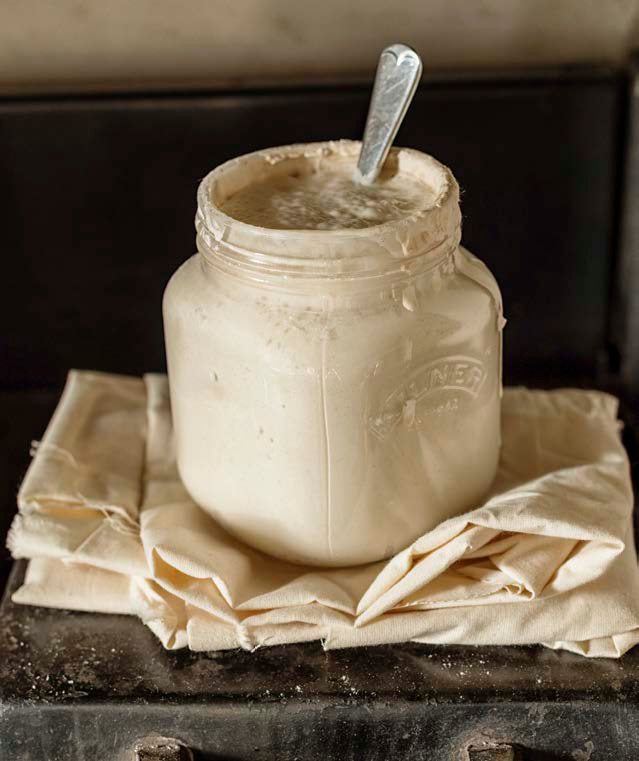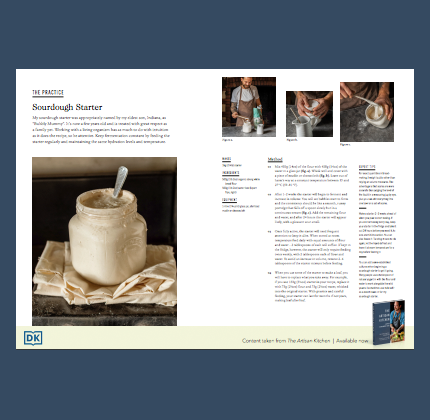How to Make a Sourdough Starter
Makes
1kg (2¼lb) starterIngredients
- 500g (1lb 2oz) organic strong white bread flour
- 500g (1lb 2oz) water (see Expert Tips, below)
Equipment
- 1-litre (1¾-pint) glass jar
- Sterilized muslin or cheesecloth

Method
Step 1.
Mix 400g (14oz) of the flour with 400g (14oz) of the water in a glass jar (fig. a). Whisk well and cover with a piece of muslin or cheesecloth (fig. b). Leave out of harm’s way at a constant temperature between 15 and 27°C (59–81°F).
Step 2.
After 1–2 weeks the starter will begin to ferment and increase in volume. You will see bubbles start to form and the consistency should be like a smooth, runny porridge that falls off a spoon slowly but in a continuous stream (fig. c). Add the remaining flour and water, and after 24 hours the starter will appear lively, with a pleasant sour smell.
Step 3.
Once fully active, the starter will need frequent attention to keep it alive. When stored at room temperature feed daily with equal amounts of flour and water – 2 tablespoons of each will suffice. If kept in the fridge, however, the starter will only require feeding twice weekly, with 2 tablespoons each of flour and water. To avoid an increase in volume, remove 2–4 tablespoons of the starter mixture before feeding
Step 4.
When you use some of the starter to make a loaf, you will have to replace what you take away. For example, if you use 150g (5½oz) starter in your recipe, replace it with 75g (2½oz) flour and 75g (2½oz) water, whisked into the original starter. With practice and careful feeding, your starter can last for months if not years, making loaf after loaf.
Expert Tips

Tip 1.
For exact quantities in breadmaking, I weigh liquids rather than relying on volume measures. The advantage is that scales are more accurate than judging the level of the liquid in a measuring jug by eye, plus you can add everything into one bowl on a set of scales.
Tip 2.
Make a starter 2–3 weeks ahead of when you plan to start baking. If you are not baking every day, keep your starter in the fridge and take it out 24 hours before you need it, to kick-start it into action. You can also freeze it. To bring it back to life again, let the liquid defrost and leave it at room temperature for a day before feeding it.
Tip 3.
You can add some established cultures when beginning a sourdough starter to get it going. Many people use a tablespoon of natural yogurt in with the flour and water to work alongside the wild yeasts. I sometimes use milk kefir as a direct stand-in for my sourdough starter.Find out more about fermenting, bread making, curing, smoking and cooking on wood, in The Artisan Kitchen:
Download as a PDF:



